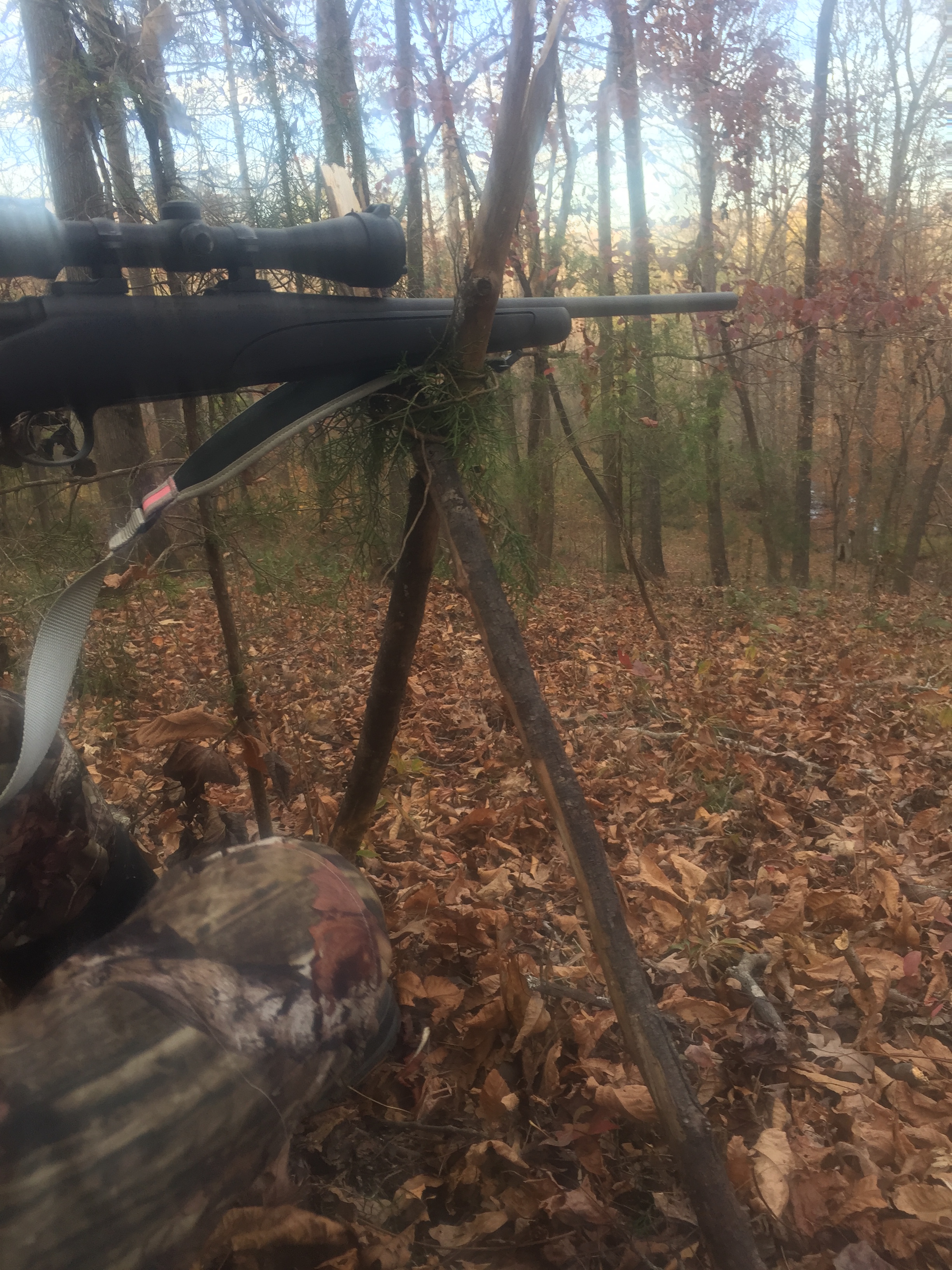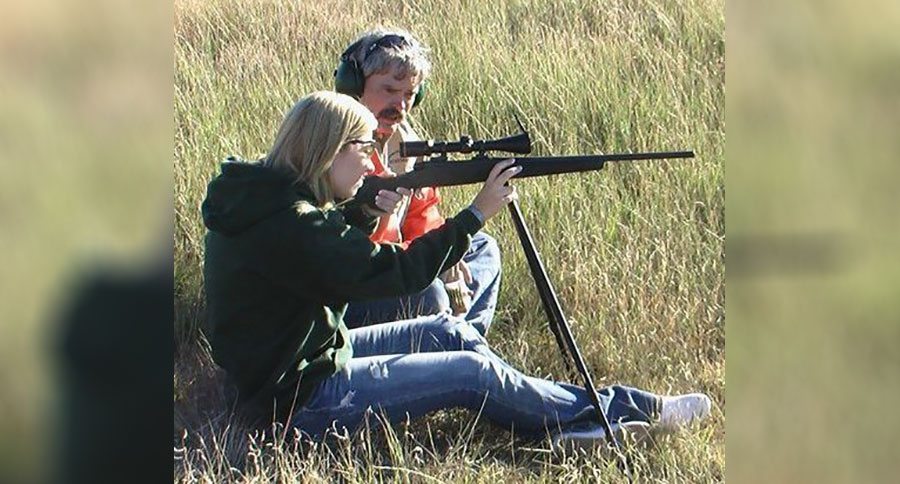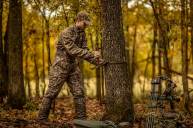Comfortable and stable shooting positions are key for a good shot
While range practice is always important, you may not always have the time and resources to get into your go-to position. Often times you'll be making long-range shots. Here are four positions you should be familiar with for big-game hunting.
1. Standing Up
For me, an off-hand standing shot is one of the most difficult, especially if you're shooting from long range at a smaller target. The only way to ensure a good shot is to practice this position until you're dialed in. The only trick I know for this is something my dad taught me when I started hunting. If there's a tree nearby, stand next to it and use your non-trigger pulling arm as a rest. Place it at a comfortable height and grip the tree with your hand. Rest the stock against your forearm. This adds stability and still allows you to turn and angle the gun with your other hand.
2. Sitting Down
The classic criss-cross applesauce. Maybe you are taking a break from trekking over hills, or perhaps you spotted game in the distance and are waiting for your shot. With shooting sticks, this shot can be similar to what you would practice at a shooting range. Without sticks, though, stability can be a concern. Try using your non-trigger hand for support and propping that elbow on your leg. This should take away a fair amount of shakiness and allow you to adjust your barrel height and aim accordingly.

This is a good time to mention a quick tip on making shooting sticks in the field. Recently, I went out on a hunt, planning to be in a ladder stand where I could rest on the rail. However, plans changed and I found myself hunting from the ground with no sticks. I grabbed a skinnier limb from the ground, snapped it in half, adjusted the pieces to an ideal length and then crossed them. Ideally, I would have taken rope and wrapped it around where they intersected, but I somehow managed to forget my rope, too. So, I pulled a few small, green limbs from a trampled sapling and wrapped them around the intersection, holding my makeshift sticks together. I rested my gun on them and practiced raising it a few times to make sure they would hold. Just like that, I had shooting sticks!
3. Kneeling
If you're caught off your rump but not quite standing, shooting from your knees may be the only option. This can be tricky since balance can be compromised. I've made one shot from my knees and fortunately I had shooting sticks so I was able to rest back on my heels for stability. Without sticks, your best bet may be to sit back on one leg and actually raise the other knee to use as a rest. Again, this creates stability, but can be uncomfortable to adjust to. Practicing it ahead of time is a good idea.
4. Lying Down
Most long-range shooters praise the lying-down position. This is because the more body parts you have grounded, the more stable you will be. By lying down and propping up on your elbows, you can use your front hand to rest the weight of the gun and the other to aim. Honestly, it's almost like shooting a rifle that has a bipod. If you have time to get into this position, especially if you don't have sticks, I would recommend it.
In a nutshell, move quickly to get into a stable position. If you have to choose between making an off-hand shot or waiting and getting set, wait, even if it means shooting from a greater distance. Use the resources around you, and as always, practice, practice, practice.
NEXT: THE DO'S AND DON'TS OF POST-RUT DEER HUNTING
https://rumble.com/embed/u7gve.v3tpc7/




